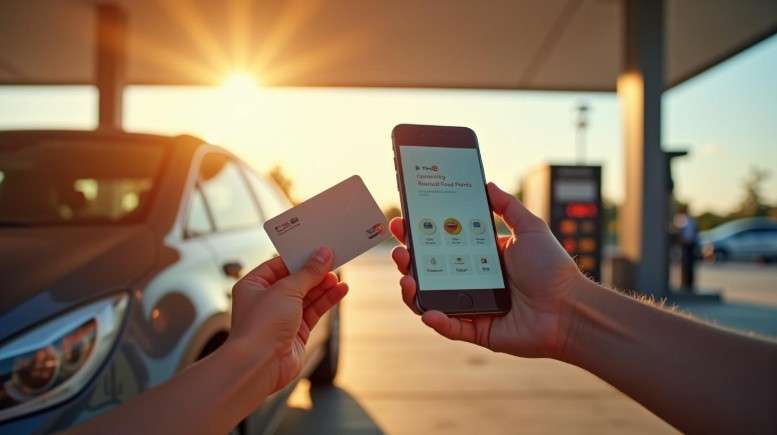How Gas Cards Maximize Everyday Fuel Rewards

You’d think any rewards program suffices, but with gas cards the smarter move is to stack fuel points, cashback, and discounts for real savings. Unlike generic credit cards that spread rewards thin across all purchases, dedicated fuel cards concentrate benefits where drivers spend most—at the pump. Resources like Valero gas cards reveal how specialized programs deliver 2-5% returns on fuel purchases versus the standard 1-2% from traditional rewards cards.
What Are Gas Cards and How Do They Work?
Fuel rewards cards operate through partnerships between issuers and station networks, offering concentrated benefits for fuel purchases. These specialized payment tools include prepaid options, business fleet cards, and traditional credit versions. Each transaction at participating stations triggers automatic discounts, points accumulation, or cashback deposits directly to your account.
The mechanics vary by card type. Prepaid versions function like gift cards with predetermined balances, while credit options extend revolving lines with monthly billing cycles. Business variants add expense tracking, usage controls, and consolidated statements for fleet management. All types leverage loyalty networks to deliver savings beyond standard payment methods.
Surprising Ways Gas Cards Outperform Typical Rewards Cards
Why “Earn Everywhere” Isn’t Always Optimal for Fuel Purchases
Generic rewards programs dilute benefits across categories, leaving fuel purchases underrewarded. Station-specific cards concentrate earnings where consumption peaks, transforming routine fill-ups into substantial savings opportunities. The math reveals clear advantages: specialized fuel cards return $60-100 annually for average drivers, while general rewards yield $20-40 from identical spending.
Payment network limitations further reduce generic card value at certain stations. Many independent locations charge convenience fees for credit transactions, eroding already minimal rewards. Dedicated fuel payment tools bypass these charges through direct issuer relationships, preserving full discount value.
Stacking Rewards—How Dedicated Gas Cards Unlock Greater Savings
Strategic combinations multiply benefits beyond single-card limits. Pairing station loyalty programs with specialized payment cards creates compound savings unavailable through standard credit alone. Chevron customers, for instance, combine app discounts with co-branded card benefits for 7-10 cents per gallon reductions.
Gift card purchases through cashback portals add another savings layer. Buying prepaid fuel cards during promotional periods, then using them alongside loyalty apps, generates triple-dip rewards. This approach transforms a $100 fuel expense into $115 of purchasing power through strategic stacking.
Comparing Leading Gas Cards and Fuel Reward Networks
Major Issuers and Their Unique Benefits
Leading programs differentiate through exclusive perks beyond basic discounts. Shell’s offerings include instant pump savings plus accelerated points on convenience store purchases. ExxonMobil combines immediate price reductions with app-based payment simplicity. BP rewards frequent drivers with tiered status levels unlocking premium benefits.
Regional players like Walmart focus on broad acceptance across multiple brands rather than single-network loyalty. Their approach suits drivers without consistent station preferences, trading depth for flexibility. These universal options maintain 2-3% returns across varied locations while avoiding network restrictions.
Business, Prepaid, and Credit Options Explained
Business fleet cards streamline expense management through detailed transaction reporting and customizable spending controls. Drivers receive individual cards linked to central accounts, enabling real-time usage monitoring. These tools eliminate reimbursement paperwork while providing valuable data for tax documentation.
Prepaid alternatives serve budget-conscious consumers and those avoiding credit inquiries. Loading predetermined amounts prevents overspending while accessing network discounts. Parents use these for teen drivers, establishing spending boundaries without credit risks. Small businesses employ them for contractor expenses, maintaining control without extending credit access.
Traditional credit versions offer highest rewards potential through sign-up bonuses and promotional rates. Qualified applicants access 0% introductory periods, valuable for managing seasonal expense fluctuations. These products require strong credit profiles but deliver maximum long-term value through compound benefits.
Network Acceptance and Station-Limited Pitfalls
Station network restrictions create unexpected limitations for unwary consumers. Brand-specific cards work exclusively at affiliated locations, leaving drivers stranded when preferred stations unavailable. California drivers discover this traveling through rural areas where major brands sparse.
Universal acceptance claims require scrutiny. Some programs exclude wholesale clubs, marinas, and rental car locations despite technically supporting the brand. Understanding these exclusions prevents disappointment when anticipated savings fail to materialize. Reading issuer terms reveals true acceptance scope beyond marketing promises.
Real-World Value—Factoring Fees, Redemption Rules, and Exclusions
Cashback, Points, and Practical Savings vs. Theoretical Offers
Advertised rates rarely reflect actual savings after accounting for redemption restrictions and earning caps. Promotional 5% cashback periods often limit earnings to $1,500 in purchases, capping quarterly benefits at $75. Annual fees further erode value, requiring $200+ in rewards just to break even on premium cards.
Points programs complicate value calculations through variable redemption rates. Fuel points worth 3 cents at the pump might yield only 1 cent toward merchandise. Understanding optimal redemption paths maximizes program value. Smart consumers track actual savings percentages rather than trusting marketing claims.
Avoiding Hidden Costs—Billing, Fees, and Program Limits
Transaction fees accumulate quietly, undermining advertised savings. Foreign transaction charges apply at stations near borders, adding 3% to purchases. Balance transfer fees, cash advance charges, and late payment penalties quickly eliminate months of accumulated rewards.
Program changes occur without fanfare, degrading value for existing customers. Issuers modify reward structures, increase fees, or restrict benefits categories with minimal notice. Monitoring account terms ensures awareness of deteriorating value propositions. Switching costs nothing when better alternatives emerge.
Digital Convenience—Apps, Payment Tools, and Account Management
Loyalty Apps, Automated Tracking, and Payment Simplicity
Mobile applications transform fuel purchasing through contactless payment and automatic reward activation. Drivers complete transactions without leaving vehicles, scanning app codes at compatible pumps. Location services identify nearby participating stations, comparing current prices across networks.
Expense tracking features categorize spending automatically, simplifying budgeting and tax preparation. Business users export transaction data directly to accounting software. Personal finance apps integrate with fuel programs, providing comprehensive spending analysis. These digital tools eliminate manual receipt management while improving financial visibility.
Security, Privacy, and Expense Controls
Digital payment methods enhance security through tokenization and biometric authentication. Lost physical cards create fraud risks, while app-based payments require device access plus authentication. Instant transaction notifications alert users to unauthorized charges immediately.
Parental controls and spending limits protect against misuse. Parents set daily purchase limits, restrict convenience store access, or limit transactions to specific locations. Business administrators configure similar restrictions for employee cards. These safeguards prevent expense abuse while maintaining payment convenience.
Who Should Use Gas Cards? When to Choose Prepaid, Business, or Standard Credit
Matching Card Types to Usage Patterns and Expenses
High-mileage commuters benefit most from premium credit options despite annual fees. Driving 15,000+ miles annually generates sufficient rewards to offset costs while accessing premium perks. These drivers should prioritize unlimited earning potential over no-fee alternatives with reward caps.
Occasional drivers find better value in prepaid or no-annual-fee options. Limited fuel spending cannot justify premium card costs, making simple cashback programs more suitable. These consumers should focus on acceptance breadth rather than maximum reward rates at specific brands.
Business owners require detailed reporting and control features beyond personal card capabilities. Fleet management tools justify higher costs through operational efficiency gains. Tax documentation, driver accountability, and centralized billing deliver value beyond simple fuel discounts.
Combining Gas Cards With Other Offers for Maximum Savings
Warehouse club memberships amplify fuel savings through member-only pricing. Combining membership discounts with appropriate payment cards creates substantial per-gallon reductions. Strategic timing around promotional periods multiplies these benefits further.
Grocery fuel programs offer alternative stacking opportunities. Earning fuel points through grocery purchases, then combining with payment card rewards, maximizes routine spending value. Some regions allow point transfers between partner programs, creating additional optimization paths.
Key Questions Before You Apply
Evaluating fuel card options requires honest assessment of driving patterns, credit standing, and organizational needs. Calculate annual fuel spending to determine whether premium cards justify their costs. Review station locations along regular routes ensuring network compatibility. Consider whether business features warrant commercial products versus simpler personal alternatives.
The optimal choice balances reward potential against practical constraints. Urban drivers with varied station access need universal acceptance, while rural consumers might optimize for specific local brands. Business needs demand expense management capabilities personal cards cannot provide. Understanding these trade-offs ensures selection of products delivering genuine value rather than theoretical savings that never materialize in practice.



